Anolis trachyderma
—
Common Forest Anole
Also known as:
Roughskin Anole
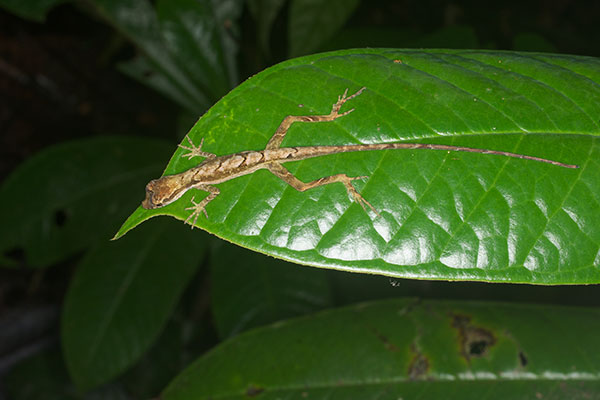
True to its English name, I saw more of these lizards sleeping on leaves and twigs at night than any other type of lizard.
Here is a complete list of the herps I saw in the wild on my 2013 MT Amazon Expeditions trip.
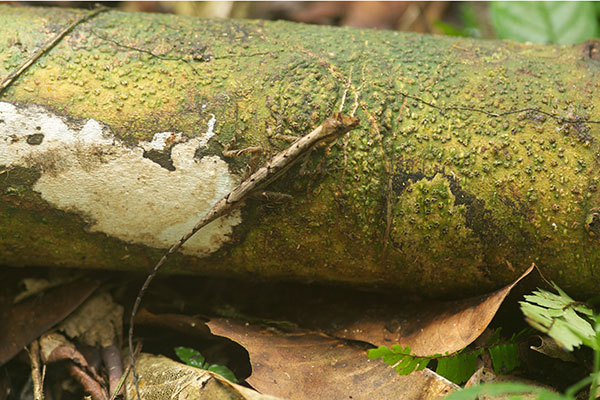
During the day, these anoles are typically seen in the leaf litter or otherwise very low to the ground.
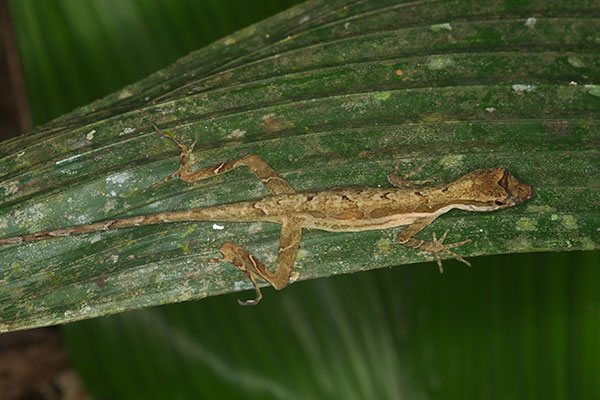
I don't understand the survival value of sleeping in plain sight on a flat leaf, but perhaps this allows the anole to feel vibrations through the leaf when nocturnal predators approach. It certainly doesn't always work, though.
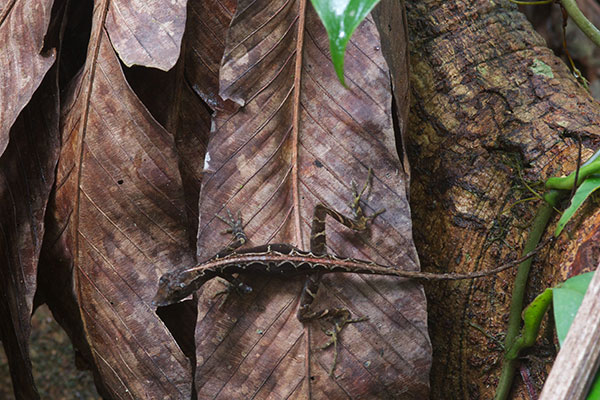
This was the most boldly-patterned individual I saw during the day. Not that I saw all that many; unlike in Florida or the Caribbean, where you can't sneeze without frightening a few anoles, in Amazonia they are not so abundant, or at least not so easy to find. I did well to see three or four on a hike.
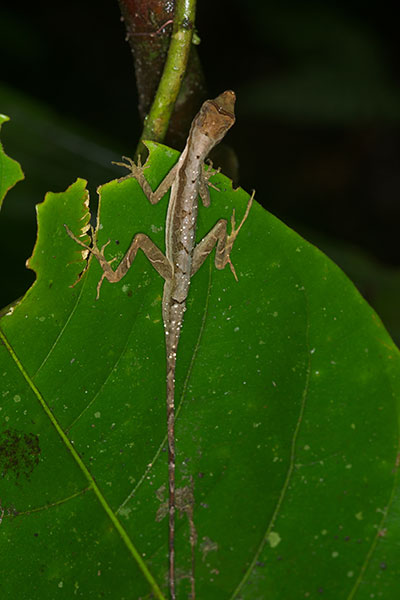
Yet another night-leaf-sleeper, though this one seems to have completely woken up before this photo was taken, and is ready to make its escape.
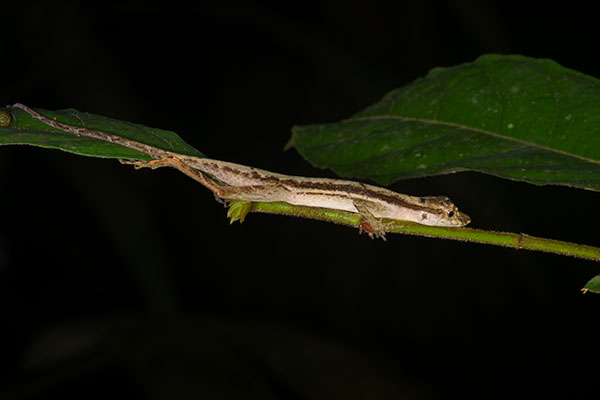
Last year I saw quite a few sleeping anoles on twigs and leaves at night. But this year I saw at least three or four times as many. I'm not sure if they were that much more plentiful, or if I had just gotten better at spotting them.
Here is a complete list of the herps I saw in the wild on my 2014 MT Amazon Expeditions trip.
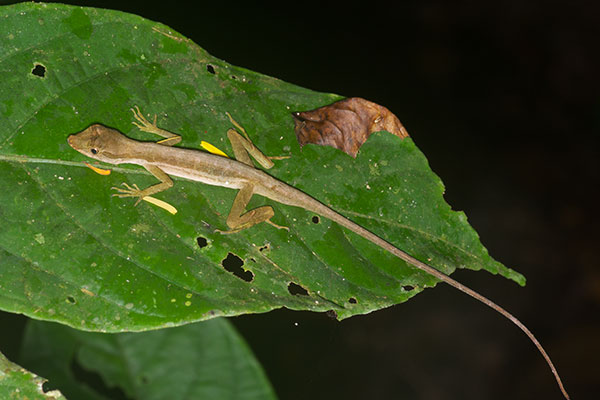
Someday I might grow tired of seeing sleeping anoles in the rainforest at night. But today is not that day.
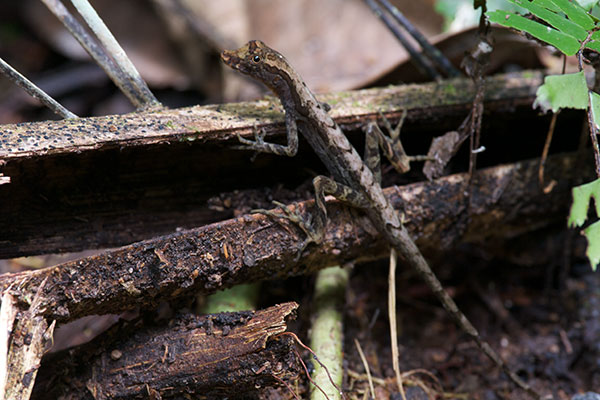
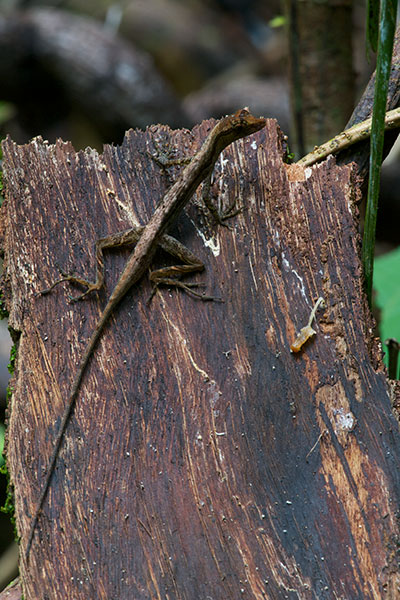
The sun was out for much of the morning, so some lizards were actually out and about during the day.
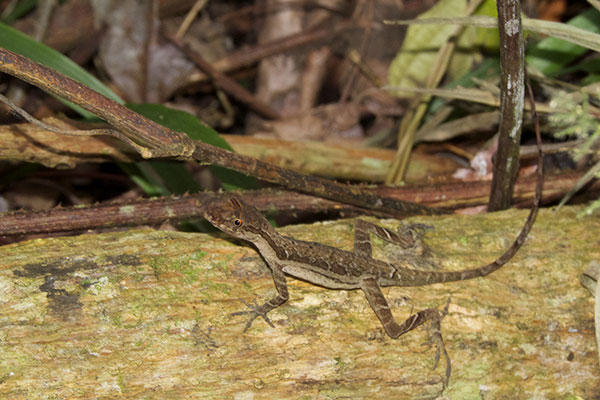
The first herp I saw in the Santa Cruz reserve this year, right at the edge of the clearing. The second herp was more exciting.
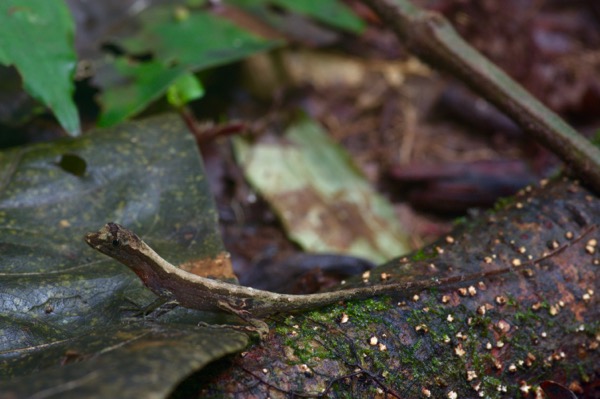
A young 'un on the forest floor. As usual with little forest-floor anoles, I only noticed it because it moved when I happened to be looking in its general direction.
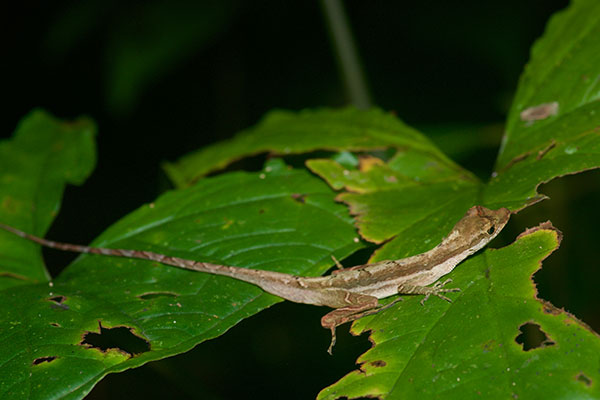
This one looks like it has just landed on this leaf after jumping from somewhere else, but it had actually been sleeping here. It did wake up and lift its head from all the photo-taking commotion, but otherwise stayed put.
My Travelogues and Trip Lists page includes a complete list of the herps I saw in the wild on my 2016 MT Amazon Expeditions trip.
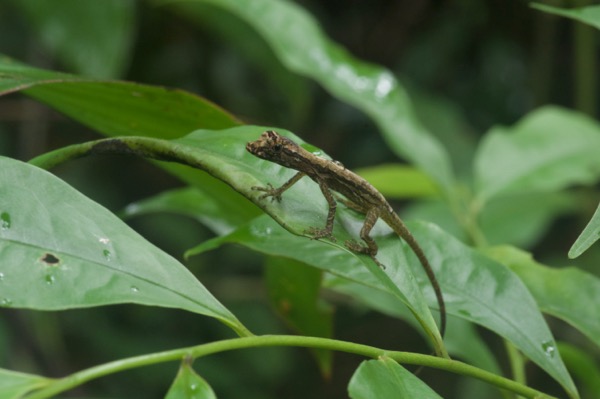
Here's a youngster carefully clambering over the wet vegetation in search of unsuspecting bugs.
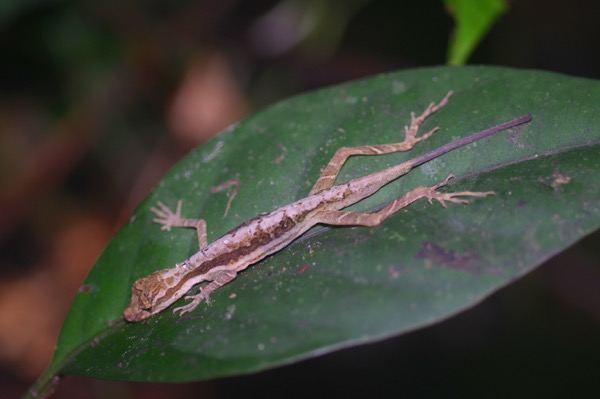
Hold on tight, little sleepy lizard! You wouldn't want to slip and fall and be caught by some passing predator that feasts on clumsy lizards, would you? Based on your tail, it looks like you have narrowly avoided this fate once already.
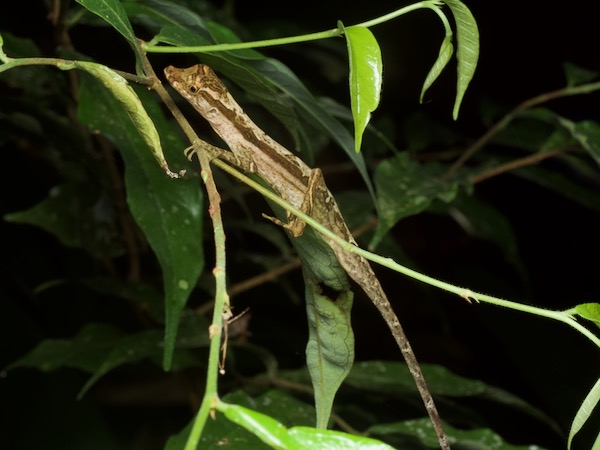
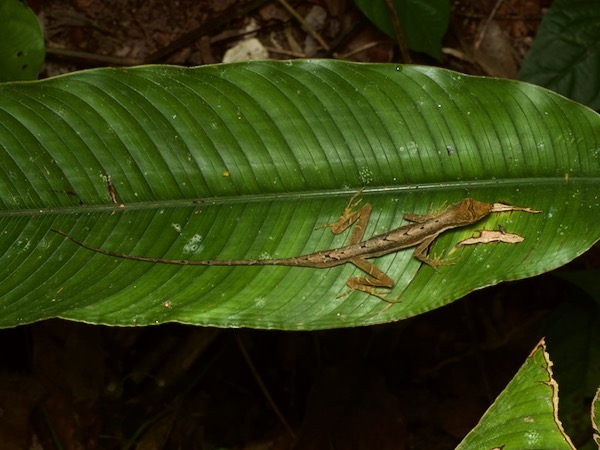
This year I saw Anolis trachyderma only at night, sleeping or at least resting.
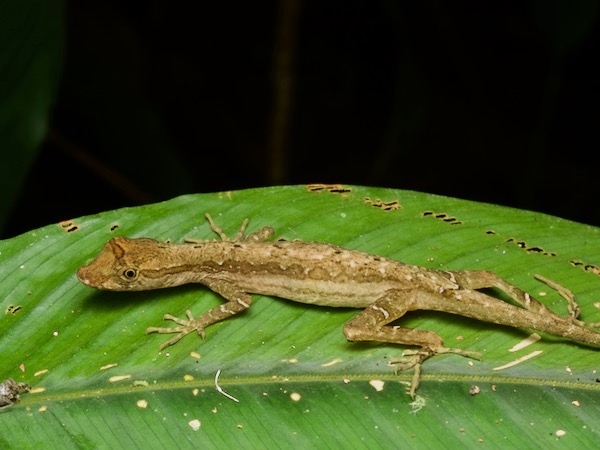
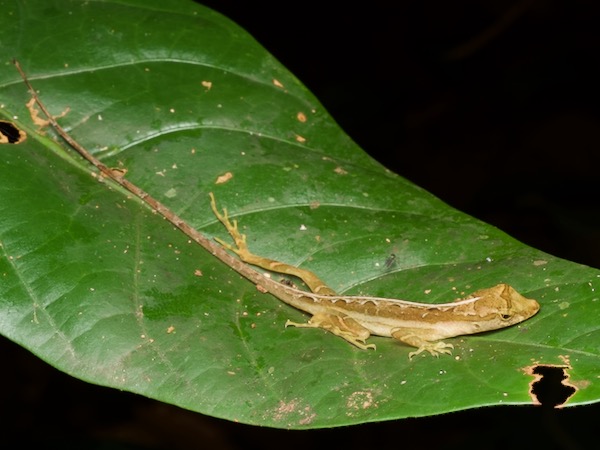
These are pretty easy to find at night, but definitely not so by day.
Printed references:
- Bartlett, R.D., and Bartlett, P. 2003. Reptiles and Amphibians of the Amazon: An Ecotourist's Guide
- Dixon, J. R. and Soini, P. 1986. The Reptiles of the Upper Amazon Basin, Iquitos Region, Peru
- Duellman, W.E. 2005. Cusco Amazónico: The Lives of Amphibians and Reptiles in an Amazonian Rainforest